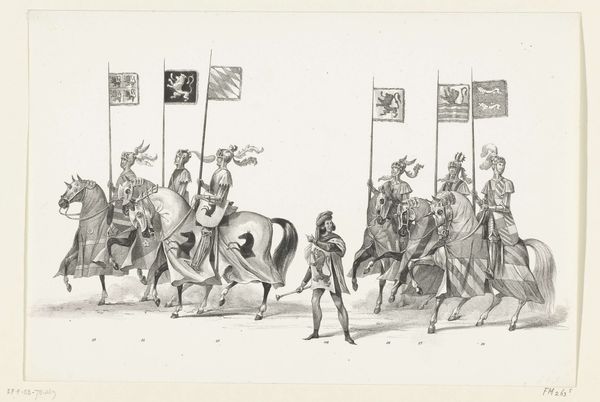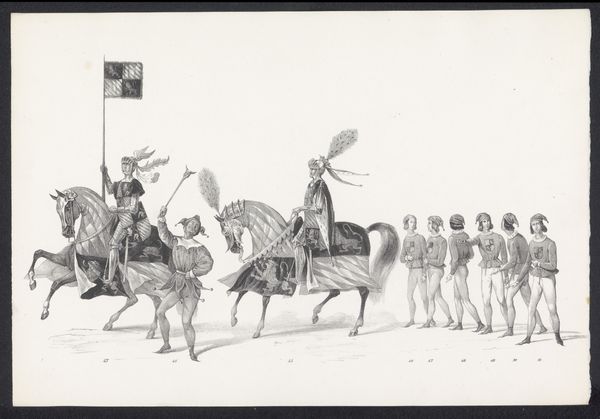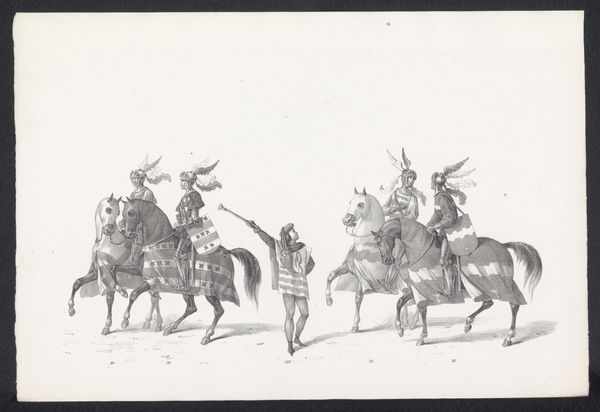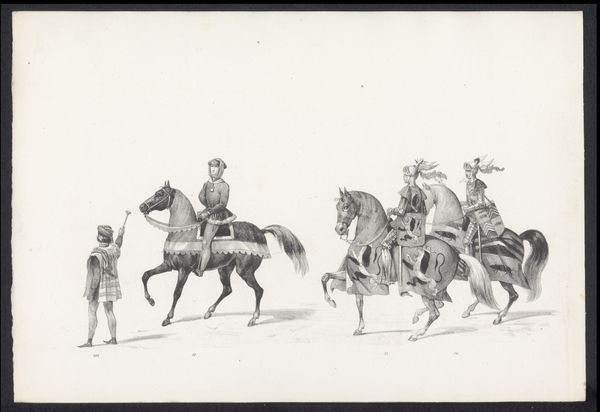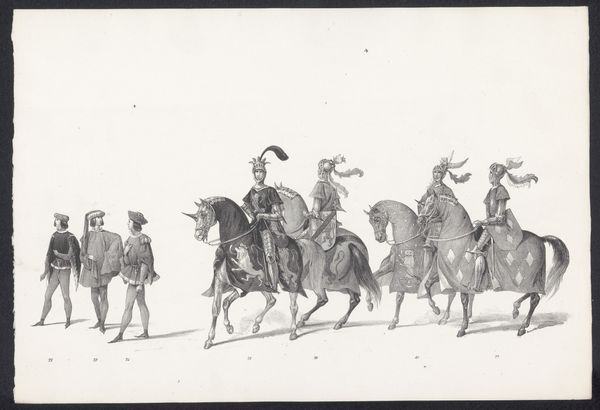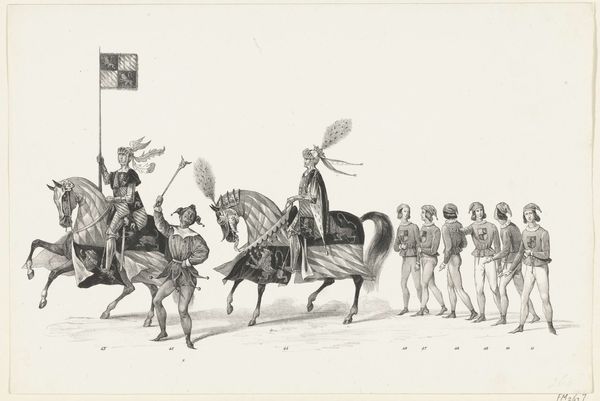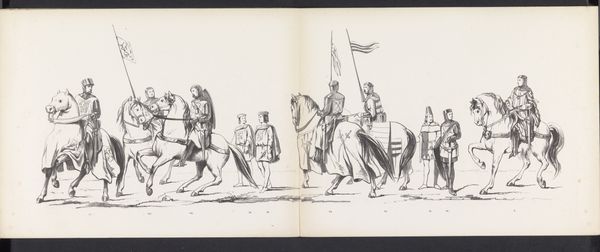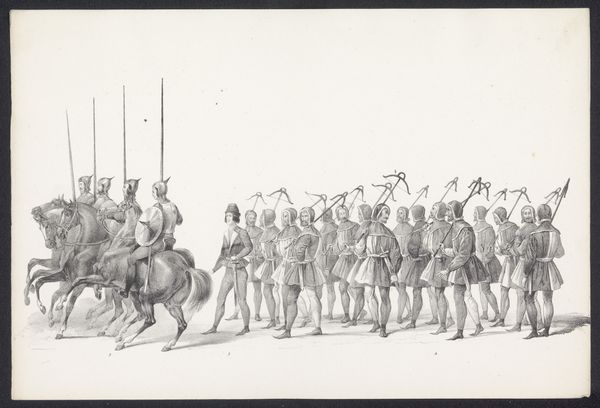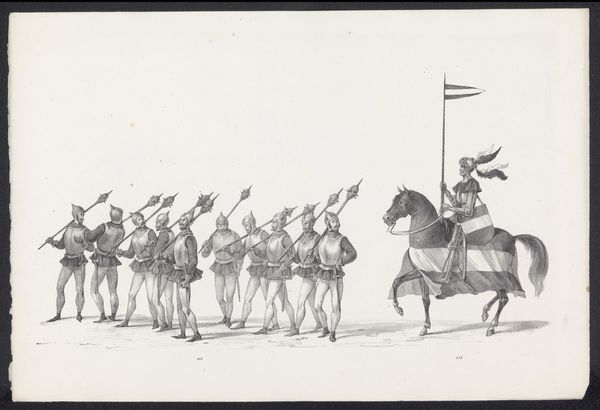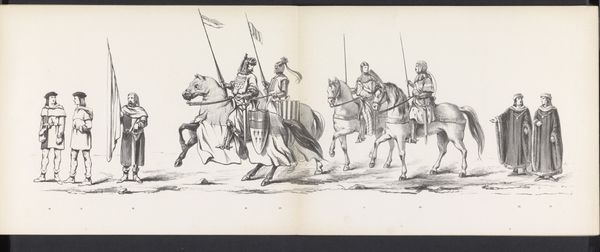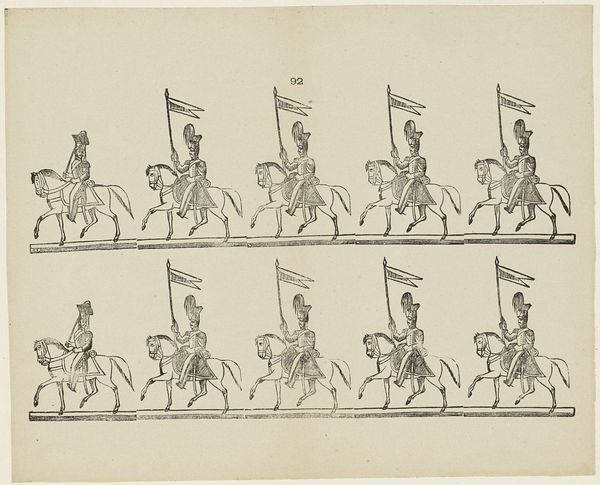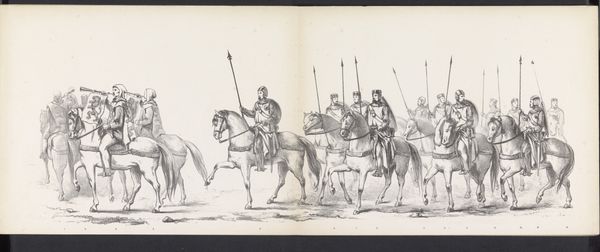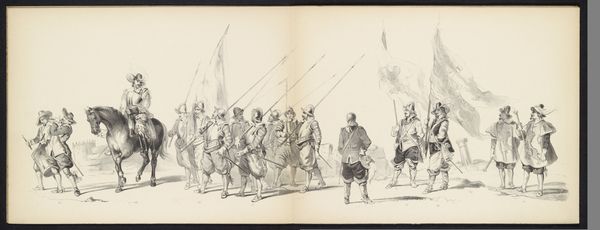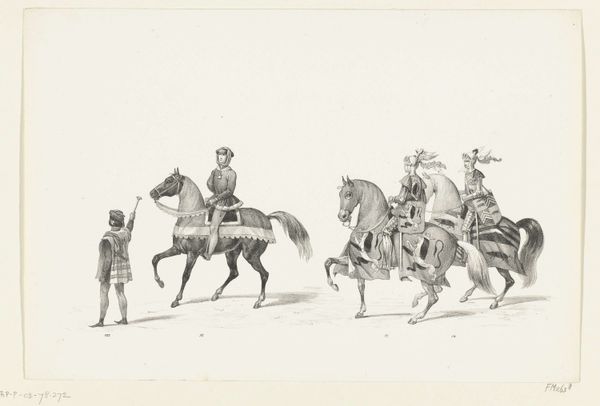
Maskerade door studenten van de Leidse Hogeschool, 1840 (plaat 5) 1840
0:00
0:00
drawing, print, ink
#
drawing
#
narrative-art
# print
#
pen illustration
#
figuration
#
ink
#
romanticism
#
pen-ink sketch
#
line
#
history-painting
#
academic-art
#
pencil art
Dimensions: height 232 mm, width 340 mm
Copyright: Rijks Museum: Open Domain
Curator: This pen and ink drawing by Jacobus Ludovicus Cornet, titled "Masquerade by students of the Leiden Hogeschool, 1840," is plate five from a series capturing a historical pageant. Editor: My initial impression is of organized pageantry—the riders, flags, and costumes all evoke a very particular and formalized image. It also feels quite theatrical. Curator: Yes, the scene is a study in constructed identity, reflecting a romanticized version of the past. These students adopt heraldic symbols, the lion rampant, various family crests -- symbols meant to project power and lineage. The masquerade then becomes a potent vehicle for self-representation and the assertion of social aspirations. Editor: Absolutely, we see how these young men use history to bolster their present. It raises questions about the accessibility and deployment of historical narratives in early 19th-century Dutch society. Were these students enacting a nostalgic fantasy, or engaging in a more calculated performance of class and privilege? Curator: I believe it's both. The romanticism inherent in the masquerade allows for a yearning for an imagined glorious past, while simultaneously the performance reinforces social structures and hierarchies through visual symbolism. The consistent appearance of heraldic animals is not arbitrary. They signal the embodiment of noble qualities and ancient rights. Editor: The setting of Leiden University itself is crucial, framing the students' performance. Leiden, established during the Dutch Revolt, carries its own historical weight. This is more than youthful theatrics. It is a conscious creation of a collective image deeply intertwined with institutional pride. Curator: You can feel the interplay between individual agency and historical imperative. Each carefully chosen symbol creates layers of meaning, revealing how identity is constructed through costume and symbolic language, allowing these students to write themselves into the larger narrative of Dutch history. Editor: It also illustrates how art can legitimize ideologies through historical references. The drawing invites us to examine not just what the students portrayed, but what they were hoping to convey to the wider Dutch society. Curator: Agreed, it reveals the continuous act of redefining cultural narratives through the symbolic expression that has been passed down through history. Editor: An insightful view into performance and politics—always timely!
Comments
No comments
Be the first to comment and join the conversation on the ultimate creative platform.
